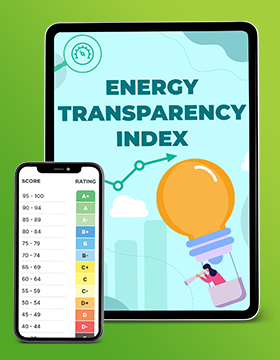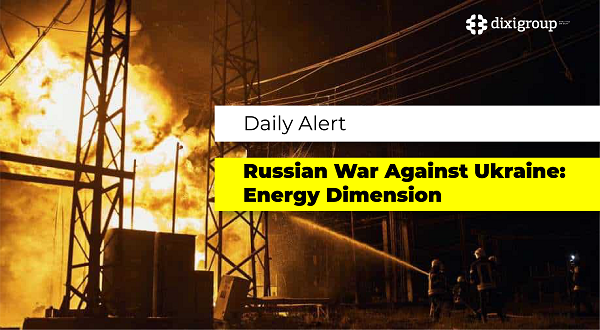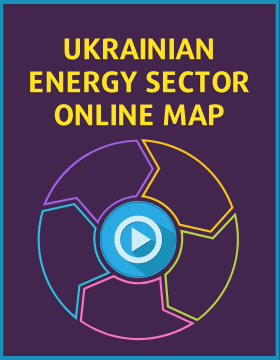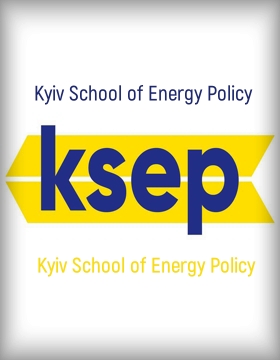Lessons from the Darkness: How the War in Ukraine is Changing Global Percep
Ukrainian energy on the front lines - how war experience shapes new standards for the world

Russia’s full-scale war against Ukraine has not only presented the country’s energy system with unprecedented challenges, but also brought the issue of its transformation to the forefront. At the same time, Ukraine has a unique opportunity to rethink its own energy architecture - taking into account the experience of developed countries, which have been implementing innovative models of management, decentralization, generation flexibility, integration of renewable energy sources and digital solutions for decades. It is no secret that the energy systems of other countries differ in scale, structure, degree of market liberalization, level of digitalization and role of the state. But they all have one thing in common: the desire for energy sustainability, security and climate neutrality. Comparing these models with the Ukrainian one allows not only to identify its strengths and weaknesses, but also to determine guidelines for development in the conditions of post-war recovery and future integration into the European energy market.
"Ukrainian Energy" has examined how the energy systems of the EU, the USA and Japan function, what market models operate in them, what mechanisms are responsible for balancing, who determines tariffs and what energy security means in a liberalized market.
Its own unique path
The Ukrainian energy system has undergone a unique transformation path - from a centralized Soviet-style model to an integrated market with elements of liberalization, balancing and market pricing mechanisms. Despite a full-scale war, attacks on critical infrastructure and constant challenges to security of supply, the energy sector of Ukraine demonstrates resilience and the ability to adapt. However, to assess the real potential of this resilience, it is worth looking at the Ukrainian model in the context of global experience.
The energy system of Ukraine is a complex multi-level structure that combines the physical and economic aspects of electricity production, transmission, distribution and consumption. Its functioning is based on two interrelated paths: physical and economic. The physical path covers the technical side - the generation of electricity at power plants, its transmission through main and distribution networks, as well as the management of these processes. The economic path is the commercial component, which includes price formation, electricity trading, interaction between producers, traders, suppliers and end users.
For the consumer, these two paths are interconnected: to receive electricity, it is necessary to have a contract with the distribution system operator (DSO), which is responsible for the physical connection and maintenance of the networks, as well as with the supplier, which sells electricity at a commercial price. DSOs are, as a rule, regional energy companies operating within a certain region. Suppliers can be different - from large companies such as Yasno (part of the DTEK group), to smaller private players.
The key market participants are state-owned and private companies. Ukrenergo is the transmission system operator responsible for balancing the power system, dispatching and developing the main networks. Energoatom is the largest electricity producer in Ukraine, operating nuclear power plants. Ukrhydroenergo is the operator of hydroelectric power plants that provide system flexibility. GarPok (Secured Buyer) is a state-owned company that acts as a financial intermediary to support producers of electricity from renewable sources. DTEK is the largest private energy holding company that covers the generation, distribution and supply of electricity.
The market regulator is the National Commission for the Regulation of Energy and Utilities of Ukraine - the National Commission for the Regulation of Energy and Utilities. It sets tariffs, licenses market participants and monitors compliance with the rules.
The balancing market plays a separate role - it is a mechanism that allows ensuring a balance between electricity production and consumption in real time. If someone has produced or consumed more or less than planned, these volumes are compensated through the balancing market. Ukrenergo acts as the administrator of this market. Its indicators are the volumes of imbalance, prices for balancing electricity, as well as price caps - limit prices that limit the maximum cost of electricity in this market in order to avoid speculation and price shocks.
Another important element is the supplier of last resort (SUR). This is a company that provides electricity to consumers in the event that their main supplier has ceased operations or does not fulfill its obligations. SUR guarantees continuity of electricity supply, although prices may be higher.
The complexity of the operation of the Ukrainian power system lies in its multi-component nature, the need for real-time balancing, dependence on weather conditions (especially for RES), as well as challenges associated with war, infrastructure damage, integration with the European ENTSO-E power system, and market reform.
And although the Ukrainian energy system still has to go through a difficult path, transform, and become part of the European energy system, the process is gradually moving forward.
For example, just these days the Verkhovna Rada adopted the draft Law of Ukraine “On Amendments to Certain Laws of Ukraine on the Implementation of European Law on the Integration of Energy Markets, Improving Security of Supply and Competitiveness in the Energy Sector” (Registration No. 12087-d). This was reported by the Ministry of Energy.
The draft, in particular, envisages: further implementation of transparent European rules in the electricity market of Ukraine;integration of short-term (spot) electricity markets of Ukraine and the EU (the so-called market coupling), integration of balancing markets with the EU, joining European balancing platforms, which will allow for increased flexibility of the energy system and access to EU reserves;unity with the EU in approaches to responding to and preparing for crisis situations in the field of electricity security; – additional mechanisms for protecting consumer rights and strengthening their role in the market by increasing the transparency of supply conditions, introducing tools for comparing supplier offers, and creating conditions for involving consumers in participating in other market segments, in particular the market for ancillary services;
In addition, such a law means strengthening the interaction of the national energy regulator with European regulatory authorities within the framework of developing the market in accordance with European standards.
The ministry emphasized that the relevant draft law was one of the central topics of discussion during the screening of Ukrainian legislation for compliance with EU law in the energy sector. Its adoption in the near future will generally allow for the synchronization of electricity markets in early 2027.
Of course, it is difficult for the average consumer to understand the intricacies of the energy market, but, as it turned out, a similar system operates not only in Ukraine.
American power
The US energy system is one of the most powerful and complex in the world. It consists of three main interstate networks (Eastern Interconnection, Western Interconnection and ERCOT in Texas), which operate autonomously and cover vast territories. (In contrast to the USA, Ukraine has a single unified power system (UPS), which was synchronized with the power systems of Russia and Belarus by 2022, and after the outbreak of a full-scale war was urgently connected to the European ENTSO-E network).
It combines a decentralized management structure, market mechanisms and multi-level regulation, which allows it to provide a stable electricity supply for more than 330 million people. Unlike centralized models, the USA has regional electricity markets that operate according to different rules, but are integrated into a single national system.
The generation structure in the USA is much more diversified. There, gas, nuclear energy, coal, hydro and renewable energy sources are widely used. A significant part of the production is provided by the private sector, the market is competitive, with liberalized rules. In Ukraine, a significant part of the generation is concentrated in the hands of a few large players: SE NNEGC Energoatom (nuclear energy), DTEK Group (thermal generation, renewable energy), Ukrhydroenergo (hydropower plants). The electricity market in Ukraine is partially liberalized, but shows signs of dominance by individual companies.
The key regulator at the federal level is the Federal Energy Regulatory Commission (FERC), which is responsible for the interstate transmission of electricity, natural gas and hydropower. At the state level, there are public utility commissions (PUCs), which set tariffs, license companies and monitor the quality of services. NERC is responsible for the reliability of the power system - an organization that sets technical standards and audits system operators. (In Ukraine, we recall that all these functions are provided by the National Electricity Distribution Company)
Electricity in the USA goes through several stages: first it is produced at power plants, then transmitted over high-voltage lines over long distances, and then distributed by local companies to end consumers. In deregulated markets, that is, in liberalized markets, consumers can independently choose their electricity supplier. In regions where the market is not liberalized, electricity is supplied by a local monopoly.
The USA does not have a single electricity market - the country is divided into several regional operators, such as PJM Interconnection, CAISO, ERCOT, NYISO, and MISO. They manage electricity markets, ensure a balance between supply and demand, and administer spot and balancing markets. The balancing market is a mechanism that allows for real-time compensation of deviations between planned and actual electricity production or consumption. In such markets, price caps are in place - maximum prices that limit the maximum cost of electricity to avoid speculation.
In deregulated markets, there is also a supplier of last resort (SLR) - a company that provides electricity to consumers in the event that their supplier has ceased operations or is in default.
The structure of electricity generation in the United States is diversified. Natural gas accounts for the largest share - about 40% of production. Renewable energy sources, such as solar, wind and hydropower, account for more than 20% and continue to grow actively. Coal, which dominated a few decades ago, now provides less than a fifth of generation. Nuclear power has steadily held about 18% of the total balance.
The complexity of the US power system lies in its scale, regional diversity, the need for real-time balancing, as well as the challenges associated with the transition to green energy, cybersecurity and climate change. At the same time, this system demonstrates high flexibility, the ability to innovate and adapt, which makes it an example for many countries seeking to reform their own energy markets.
European balance
The European energy system is a complex multi-level infrastructure that has gradually evolved from national energy networks to a common, coordinated system operating within the EU. The key unifying element is ENTSO-E, the European Network of Transmission System Operators for Electricity, which ensures the synchronization, stability and security of electricity supply in more than 35 countries, including Ukraine, which was urgently synchronized with the European network in March 2022. ENTSO-E operates a common platform for electricity exchange, coordination of capacity reserves, balancing and market integration. This allows member states to avoid overinvestment in reserve generation and respond more quickly to emergency situations or peak loads.
The most powerful players in the European energy system are Germany, France, Italy, Spain and the Benelux countries. Germany has a large share of renewables in its generation, but is forced to balance it with imports from France or Poland. France, on the other hand, remains one of the leading exporters of electricity thanks to its powerful nuclear sector - more than 60% of the country's electricity is produced at nuclear power plants. Italy and Spain are actively developing solar generation, but need imports in the winter. Poland is still largely dependent on coal, but is actively investing in renewables and gas generation. The Scandinavian countries - Norway, Sweden, Finland - have a surplus of hydro resources, which allows them to export green electricity to their neighbors and maintain balance in the system.
The EU's integrated energy system is based on its own principles. For this purpose, such instruments as capacity mechanisms, short-term market platforms (e.g. day-ahead market, intraday market), as well as cross-border auctions for access to interstate intersections are in place. Each country is obliged to ensure a minimum level of connectivity with other Member States, which avoids isolation and increases the energy security of the region.
Another important component of the European system is a high level of digitalization and integration of new technologies such as smart grids, energy storage systems, flexible consumers and distributed generation. Thanks to this, EU countries can better manage demand, implement renewables faster and reduce greenhouse gas emissions. At the same time, the European energy system faces challenges - in particular, capacity constraints between individual regions, a lack of flexible reserves, investment delays in networks and growing pressure from consumers for price stability.
Ukraine, which has joined the European ENTSO-E energy network, is still in the process of a deep transformation of its energy system - after all, full integration involves not only technical synchronization, but also harmonization of market rules, increased transparency, liberalization of electricity trade and integration of renewable energy sources.
Different frequencies
Japan's energy system is unique among Asian countries in that it has two different frequency standards: 50 Hz in the eastern part of the country (Tokyo, Hokkaido, Tohoku) and 60 Hz in the western part (Osaka, Kyoto, Kyushu). This discrepancy dates back to the late 19th century, when the eastern part of the country purchased German equipment, and the western part - American.
Because of this, the country has a limited ability to transmit large volumes of electricity between regions, which became especially critical after the Fukushima-1 accident in 2011. Japan's energy sector has historically been decentralized: 10 large regional companies had a vertically integrated structure — generation, transmission and distribution. However, after 2011, Japan reformed its system — separating generation and transmission, creating a competitive market and introducing an independent system operator OCCTO (Organization for Cross-regional Coordination of Transmission Operators), which coordinates the national balance. The generation structure includes nuclear power, renewable energy, gas and coal plants. Nuclear power lost ground after 2011, while the share of imported gas and renewable energy increased. However, recently, the energy company Kansai Electric Power resumed construction the Mihama nuclear reactor in Japan, which was shut down after the Fukushima disaster 14 years ago.
2In a resource-poor country like Japan, we need to think about how to ensure uninterrupted energy supplies, especially given the growth of new industries,” said Nozomu Mori, president of Kansai Electric.
The Japanese government has set a goal of providing 20% of its electricity supply from nuclear power by 2040. However, public opinion in some regions of Japan remains sharply negative about the development of nuclear power.
China’s power system is one of the largest and most powerful in the world. China has five major regional grids covering the entire country, but the integration between them is gradually increasing. The main feature is the dominance of the state: the key players are the State Grid Corporation of China (SGCC) and China Southern Power Grid (CSG) - two state-owned companies that provide transmission and distribution. A significant part of the production is also controlled by state-owned corporations. China has a unique management system - it is developing an "intelligent" network (Smart Grid), investing in ultra-high voltage (UHV) power lines, which allows it to transmit huge volumes of electricity thousands of kilometers from the west (where there are resources - hydro, coal, solar, wind) to the economically developed east. The generation structure is still coal-centric, but renewable sources, especially solar and wind power, are developing rapidly. China is also developing a powerful nuclear sector and seeks to become a global exporter of energy technologies.
China demonstrates a centralized expansive model with an emphasis on large-scale expansion of generation and networks, while Japan is an example of a high-tech but regionally fragmented energy system with a high level of stability, limited resources and a complex management structure.
The Ukrainian energy system, as an example
Russia's full-scale war against Ukraine has forced the global energy community to look at the functioning of energy systems from a completely different angle. Resilience, flexibility, mobility, decentralization, cyber defense, management in conditions of unpredictable risks - these are exactly the aspects that were worked out in extremely difficult conditions by Ukrainian energy companies and state institutions. And now this experience is increasingly being studied in the EU, the USA, Japan and at the level of international energy institutions.
One of the key elements of the Ukrainian experience has been ensuring the continuity of the functioning of the unified energy system in conditions of targeted terror against critical infrastructure. During the fall and winter of 2022–2023, Russia destroyed more than 50% of generating capacity and hundreds of substations and power lines. However, the Unified Power System of Ukraine survived - thanks to the clear work of the dispatch centers of NPC Ukrenergo, the rapid mobilization of repair teams, the decentralization of generation sources and the strategic decision to urgently join ENTSO-E. The latter not only ensured emergency balancing, but also created the basis for further integration into the European electricity market. This example is currently being studied by European countries as a case study of operational systemic response to threats.
The digitalization of the Ukrainian energy sector is another aspect that has interested the international community. The deployment of mobile control systems, automation of metering, electronic procurement platforms and online tools for forecasting demand have become a necessity in wartime conditions. The Ukrainian case has proven that even in the most acute crises, digital solutions allow maintaining system control and responding quickly to changes.
World experts pay special attention to the practice of distributed generation and the role of decentralized energy sources. The mass installation of solar power plants, generators, battery power systems and microgrids by businesses, communities and even private households has created a buffer of stability. This experience is actively analyzed in countries where the development of RES (renewable energy sources) systems is ongoing, and, in particular, is discussed at the level of such institutions as the IEA (International Energy Agency) and BloombergNEF.
Another important topic was demand management and the culture of consumption. Ukrainians demonstrated an example of voluntary energy consumption restrictions when the country was experiencing peak electricity shortages. Mechanisms for warnings, agreements, flexible schedules and soft restrictions were introduced in a matter of weeks. Demand models that take into account not only the market but also the social component, including respect for solidarity in the face of threats, are already being discussed in the USA, the EU and Japan.
Global energy experts are also interested in Ukrainian experience in increasing the cyber resilience of energy systems. In recent years, Ukraine has repelled massive cyberattacks on its energy infrastructure facilities - both on generation and dispatch centers, ASKOE systems, and energy traders. NATO countries, in particular the USA and the UK, have included Ukrainian developments in their analytical reports, and joint exercises with CERT-UA and government teams of allied countries have become regular.
The experience of energy volunteering and logistics has become no less important: “mobile energy” — systems based on diesel/gas generators, batteries and transformer modules that were delivered to communities, hospitals, and schools — has created a new paradigm of rapid response. This format is currently being studied as an element of crisis management in the energy sector.
The world recognizes: Ukraine has become a testing ground for a unique experience of energy system survival in wartime. And this experience is valuable not only as an anti-crisis, but also as a model of resilience for the world, which is increasingly facing challenges — climatic, geopolitical, cyberattacks or hybrid threats. The Ukrainian example teaches flexibility, coordination and rapid decision-making. And that is why at energy conferences in Brussels, Berlin, Washington or Tokyo the same thing sounds: today Ukraine is learning how to build the energy of the future - sustainable, digital and people-oriented.
Olena Marchenko, specially for "Ukrainian Energy"








